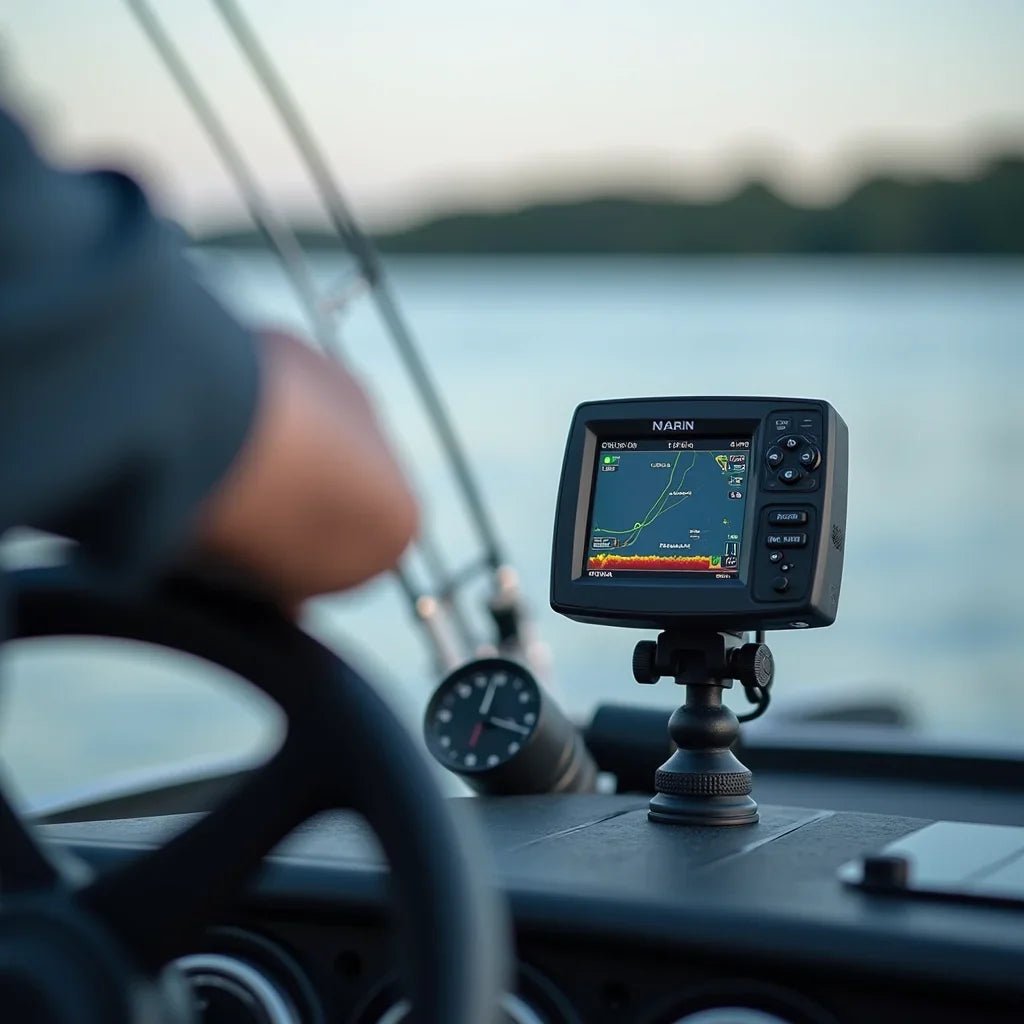Updated on: 2025-10-01
Table of Contents for a fish finder for boat guide
- Table of Contents for a fish finder for boat guide
- Did You Know? Helpful facts about a fish finder for boat
- Expert Tips for choosing and using a fish finder for boat
- Personal Anecdote: dialing in a fish finder for boat
- Summary & Takeaways on a fish finder for boat
If you are exploring the right fish finder for boat adventures, you are in the right place. A boat fish finder can turn guesswork into gentle guidance by showing structure, depth, and fish arches with clear sonar. This article covers the key features to consider, including transducer types, screen clarity, power, and mapping. It also includes a starter-friendly process for installation, plus considerations for the best fish finder for small boat needs. If you prefer learning through local insights and on-the-water stories, you may enjoy the helpful posts on our Blog. By the end, you will feel comfortable comparing a fishfinder for boats, understanding boat sonar, and deciding whether you also want a dedicated depth finder for boat trips.
Did You Know? Helpful facts about a fish finder for boat
- A fish finder for boat use reads returning sound waves; the transducer is the part that sends and receives pings under your hull.
- Boat sonar comes in several flavors: traditional 2D, Down Imaging, Side Imaging, and sometimes Live sonar. Each helps in different ways.
- Traditional 2D is gentle on power draw and great for seeing depth, bottom hardness, and fish arches. It is a strong all-around choice.
- Down Imaging (sometimes called DownScan) provides photo-like images of structure right below your boat, making it easier to spot brush piles or drop-offs.
- Side Imaging scans a wide swath left and right, helping you locate submerged cover without driving over it—very helpful in shallow flats.
- A depth finder for boat operators focuses primarily on depth and bottom profile; many modern fish finders include this function in the same unit.
- Screen readability matters in bright sun. Consider anti-glare glass, higher nits, and a screen size that matches your console or kayak deck.
- Power and frequency affect clarity. Higher frequencies show more detail in shallow water, while lower frequencies can reach deeper water.
- Many anglers value a fish finder for boat with GPS and mapping to mark waypoints, follow tracks, and build safe routes in unfamiliar water.
- For portability, look at compact units, rechargeable power packs, and transducer mounts designed for small boats and kayaks.
Expert Tips for choosing and using a fish finder for boat
Choosing a fishfinder for boats can feel like learning a new language, and that is okay. The following tips aim to be calm and practical, so you can make a choice that fits your water, your boat, and your budget.
- Match sonar to your water. Shallow lakes benefit from Side Imaging; steep reservoirs often reward Down Imaging and traditional 2D.
- Right-size the display. On small tiller boats, 5–7 inches is friendly. On consoles, 7–9 inches commonly balances space and clarity.
- Mind your power. Verify your wiring, fuse, and battery health to prevent flicker or noise lines on the screen.
- Place the transducer thoughtfully. Clean water flow and a level mount solve many image issues before they start.
- Update software. Manufacturers release improvements that often refine sonar clarity and mapping features.
Types of boat sonar explained
When selecting a boat fish finder, sonar type is a key decision:
- Traditional 2D: Great for seeing arches, bait clouds, and bottom transitions. It uses cones of sound that are reliable and easy to interpret.
- Down Imaging: Offers sharper, picture-like detail just below your hull. It is helpful for recognizing brush, rocks, and timber.
- Side Imaging: Scans wide areas left and right. This can reveal submerged stumps, laydowns, or channels without driving over them.
- Live sonar (where available): Shows motion in near real time, which can help visualize lure action and fish response.
Each option can serve you well. If you favor quick searching, Side Imaging saves time. If you prefer vertical presentations or drop-shot techniques, Down Imaging and 2D shine. Blending modes often gives the best picture of what is below and around your boat.
Step-by-step: How do you install a fish finder on a boat?
Here is a simple way to install a fish finder for boat use. Please take your time and move at a pace that feels comfortable.
- Plan the layout: Decide where the head unit will sit and where the transducer will mount (transom, through-hull, or trolling motor).
- Power routing: Run a dedicated power line from your battery with the proper inline fuse. This helps reduce electrical noise.
- Mount the transducer: Keep it level with the waterline and in clean water flow, away from strakes or steps that cause bubbles.
- Seal and secure: Use marine sealant on any screw holes and secure cables with zip ties to prevent chafing.
- Install the head unit: Mount the bracket or flush-mount plate and connect the power and transducer cables.
- Initial setup: Power on, choose language, set units, and select basic sonar modes suitable for your water depth.
- Water test: Idle at various speeds to confirm a clean bottom reading. Adjust angle if you lose signal on plane.
- Fine-tune: Start with auto settings. Then gently adjust sensitivity, contrast, and noise filters to taste.
If you would like a calm overview of local considerations before you begin, the Home page offers helpful starting points and regional context.
Choosing the best fish finder for small boat setups
The best fish finder for small boat owners is the one that fits the space, power, and style of your trips. Compact 5–7 inch screens are easier to mount on small consoles or rail systems. Look for low power draw, simple menus, and a versatile transducer that handles shallow and moderate depths. Quick-release mounts and portable batteries are friendly upgrades for jon boats and kayaks. If you plan to scout shorelines, Side Imaging at moderate ranges can be very helpful. If you primarily vertical fish, 2D plus Down Imaging may be the most balanced option.
Understanding GPS and mapping in a fish finder for boat
A fish finder for boat with GPS and mapping does more than place you on a map. It helps you mark waypoints, save tracks, and build routes. On unfamiliar water, this can add comfort by showing safe lanes and previously visited spots. Consider whether you want built-in maps, an SD card slot for regional charts, or custom mapping features. If you often fish the same lake, mapping lets you log contours and note seasonal changes without guesswork.
Personal Anecdote: dialing in a fish finder for boat
On a quiet morning, I mounted a new fishfinder for boats on a small tiller craft. The first idle pass showed a faint bottom return and a few scattered arches. I nudged the transducer angle a touch, tightened one screw, and idled again. The difference was gentle but clear—the bottom line sharpened, and brush piles stood out as bright shapes on Down Imaging. I added a few waypoints where bait flickered. A short drift later, I realized the simplest adjustments had made the screen easier to read. It was a kind reminder that careful placement and a few minutes of tuning can help any fish finder for boat users get more comfortable with their screens.
Summary & Takeaways on a fish finder for boat
- Match the fish finder for boat features to your water and style: Side Imaging for searching, 2D and Down Imaging for clarity and detail.
- Plan a clean install. Level transducer placement and tidy cabling support stable readings.
- Screen size should fit your helm and eyes. Larger is not always better on small boats.
- Consider a depth finder for boat safety in shallow or rocky lakes; many modern units combine fish finding and depth in one.
- GPS and mapping add comfort, track saving, and safer navigation.
- Small boats benefit from compact units, portable power, and quick-release mounts.
- Start with auto settings, then tune sensitivity, contrast, and ranges gradually.
If you would like to learn more about our story, the About page offers a friendly introduction. You can browse fresh how-to articles on the Blog and reach out through Contact whenever a question comes up.
What is the best fish finder for a boat?
The best choice depends on your boat size, water depth, and how you like to fish. For small consoles or jon boats, a 5–7 inch unit with 2D and Down Imaging is often a balanced start. If you cover water to find structure, Side Imaging can be very helpful. Anglers who rely on precise positioning may prefer a fish finder for boat with GPS and mapping. Rather than focusing on a single “best,” it may help to write a short list of must-haves (screen size, sonar type, mapping) and choose the unit that aligns with those needs.
How do you install a fish finder on a boat?
Plan the layout, run a fused power line, mount the transducer level in clean water flow, seal all holes, and secure cables. Then mount the head unit, connect power and transducer leads, and complete a water test. Start with auto settings, then gently adjust sensitivity and contrast until the display looks clear for your typical depth and speed. You can revisit the step-by-step notes in this guide anytime.
Do you need a depth finder for a boat if you have a fish finder?
Many modern fish finders also function as depth finders. If your unit shows depth and bottom clearly, a separate depth finder for boat operation may not be necessary. However, some boaters prefer a redundant, always-on depth display for peace of mind, especially in shallow or rocky areas. If that sounds helpful, a simple, low-power depth-only gauge can be a thoughtful addition.

Owner and CEO of Clinch River FIshing USA. A marine electroncs, fishing and outdoor store.

